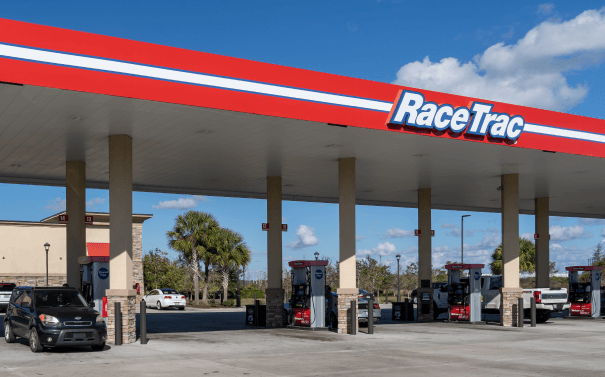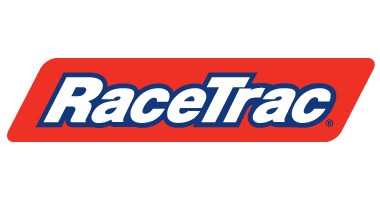RaceTrac Customer Case Study
RaceTrac Fuels Real-Time Data Insights for Decision-Making with Alation and Databricks

Challenge: Siloed organization, siloed data
As the gas flows at a RaceTrac retail service station, so does data — a lot of data.
RaceTrac stores sell 27 million cups of coffee and 9 million slices of pizza per year. Their fuel subsidiary sells 5 billion gallons annually to their locations and other leading retailers and fuel wholesalers.
On top of 260 million annual transactions, RaceTrac receives feeds from store cameras and fuel pump IoT devices at their nearly 800 locations.
Each business and department used its own formulas, processes, and definitions to create reports. As a result, and even with the same data, the reports could contain wildly different conclusions and recommendations. What’s worse, reports based on transactional data could take as long as 24 hours to produce since the company had no visibility into real-time data. This hindered the swift strategic decision-making needed to delight RaceTrac customers.
“Our siloed data, [and a] lack of governance and a single source of the truth, hindered our CEO’s vision of becoming a data-driven organization,” says John (JW) Williams, Executive Director of Enterprise Data at RaceTrac. “Data users didn’t understand and trust the data, limiting their ability to make great strategic business decisions.”
Objective: Become more data-driven
RaceTrac wanted to use the vast data they collect to fuel strategic decision-making and become a more data-driven organization. They first needed to:
Break down organizational data silos
Standardize and certify datasets to create a single source of truth — and spot discrepancies faster
Gain visibility into real-time transaction data
Solution: Alation and Databricks create a data single source of the truth
RaceTrac sought to consolidate and unify the company’s data on the Microsoft Azure cloud. To govern that data, they selected Alation for its ability to easily implement data lineage, governance, and collaboration across the enterprise. The product’s leadership position in the Gartner Magic Quadrant for Metadata Management Solutions instilled confidence in that choice.
The first order of business was to ingest valuable assets into Alation, including more than 500 Power BI datasets and reports and 1,500 database tables across SQL Server and Databricks. RaceTrac then established 44 data owners and stewards across 10 business domains. These data experts, who had been duplicating efforts, worked closely to eliminate redundancies and identify and certify datasets in each domain. The certified datasets, curated in Alation, now provide the definitive source of truth for calculations and reports.
Alation also provides a single-pane-of-glass view into real-time transaction data in the RaceTrac Databricks Lakehouse — an architecture that combines the best qualities of data warehouses and data lakes. RaceTrac uses Databricks to ingest and analyze real-time transactions at scale. APIs pull data into the lakehouse, including everything from store cash management and point-of-sale (POS) systems to up-to-the-minute fuel trading prices and gas pump information. RaceTrac can even drill down into specific POS transactions and map them to a camera feed in an API to spot theft and other issues and patterns.
“At RaceTrac, everyone has a level of responsibility when it comes to data because data is an enterprise-wide asset,” says Williams. “By establishing a strong data governance program, which provides a standard approach to processing, retrieving, archiving, and restoring data, we have created a solid foundation for our enterprise data. The organization can now make great decisions with a much higher confidence level.”
Results: Real-time visibility leads to faster insights
With Alation, RaceTrac gained a trusted data governance platform that provides a single view of their organizational data, including that in their Databricks lakehouse. By breaking down data silos, Alation helps decision-makers get to data insights faster.
Alation’s Popularity feature, which surfaces the most popular data assets in search, helped RaceTrac identify the most used datasets and their top users. With this visibility, data leaders could then collaborate to reduce the number of disparate datasets from 725 to 250, with a further goal to reduce that number to 150 by 2024. By reducing data redundancies by 65% and aligning on certified datasets and KPIs for reporting, RaceTrac has fostered greater trust in data. The result: faster insights, fewer discrepancies in reporting across the organization, and better decision-making to fuel business growth.
Using Alation, RaceTrac now has visibility into the real-time data ingested through multiple APIs into Databricks. Real-time visibility has helped RaceTrac spot and resolve discrepancies between systems that otherwise would result in loss or theft.
“We had a major win with our fuel volume reporting,” says Williams. “We identified discrepancies in fuel volume as reported by the field department vs. the merchandise finance department. In some cases, there were twice as many gallons delivered as sold, indicating a loss.” By drilling down into the data, RaceTrac can identify whether the source of the discrepancies stems from data, source system issues, or actual fraud or theft. Prior to using Alation, it would have been difficult to identify the differences between these reports, let alone know how to reconcile them. Thanks to increased visibility on the Alation platform, RaceTrac created the necessary protocols for theft prevention, which directly impacts the company’s bottom line.
RaceTrac continues to use Alation to identify and curate data to migrate to the cloud. This helps speed up the ongoing cloud migration and ensures that only the most valued and used data is migrated.
Loading...

